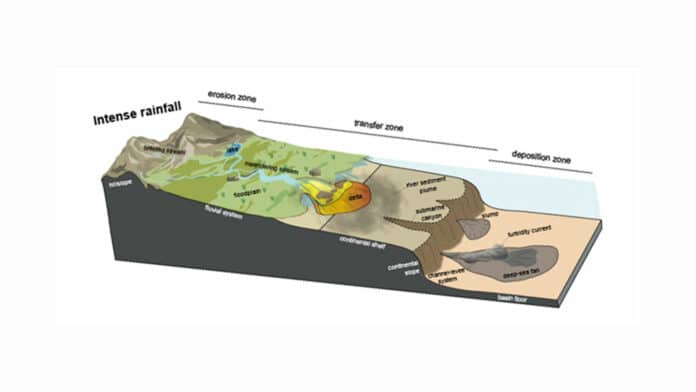The Paleocene–Eocene Thermal Maximum (PETM) was a rapid global warming event that happened 56 million years ago. The event caused substantial environmental changes around the globe. The event has similarities to current and future warming.
This scenario could be repeated today, revealed scientists from the University of Geneva (UNIGE), based on the analysis of sediments taken from the deep waters of the Gulf of Mexico.
PETM lasted for about 200 000 years and led to numerous marine and terrestrial extinctions.
This would have been due to higher concentrations of carbon dioxide – the well-known CO2 – and methane, two potent greenhouse gases, in the atmosphere. As it is now, multiple events—including the release of methane hydrates held on the ocean floor, the sudden and extensive melting of the permafrost, and the injection of magma into the organic sediments of Norway’s western edge—may have contributed to the release of these gases.
These processes’ origin is still up for dispute. It’s possible that a meteorite strike or the results of ferocious volcanic activity in the North Atlantic’s depths are to blame.
Scientists are carefully examining the geological remnants from this time period because of the many similarities between PETM and current warming. A team from the UNIGE is presently reporting new information.
Lucas Vimpere, a post-doctoral scholar at the Section of Earth and Environmental Sciences of the UNIGE’s Faculty of Science and first author of the study, said, “The objective of our study was to investigate the influence of these climatic changes on sedimentary systems, i.e., on the processes of sediment formation and deposition, and to understand how these changes could have been transmitted from the atmosphere to the depths of the ocean.”
For the study, scientists collected and analyzed sediments from more than 8km deep in the Gulf of Mexico. This basin acts as a giant ‘sink’ into which material eroded and transported from the North American continent over millions of years is discharged.
Scientists noted, “For reasons of cost and infrastructure, the sediments used to study the PETM are generally taken from shallow marine or continental environments. Thanks to an oil company’s collaboration, we obtained a sample of unprecedented quality without any alteration. The 543-meter-long core contains a 180-meter-thick PETM sedimentary record, making it the most complete geological “archive” of this period in the world.”
Sébastien Castelltort, full professor at the Earth and Environmental Sciences Section of the UNIGE Faculty of Science and the last author of the study, said, “We found that it was composed first of a large layer of clay and then of a layer of sand, a counter-intuitive result. At the time of the PETM, we thought there had been more precipitation and, therefore, more erosion and that large quantities of sand had then been transported first by the fluvial systems into the oceans. However, thanks to our sample, we could determine that it was the clays and not the sands that were transported in the first instance.”
Vimpere said, “This established that the period was not marked by an increase in the annual precipitation rate but by an increase in its seasonality and intensity. “This resulted in increased mobility of the river channels – the deepest areas of a river – which transported large quantities of fluvial clays deposited on the adjacent alluvial plains to the ocean depths. We can now consider the presence of clay in deep basins as a marker of increased rainfall seasonality. The phenomenon has led to an increase in ocean turbidity that is harmful to marine life, especially corals.”
“The PETM is a potential analog of current warming. As recent IPCC reports show, we are also seeing an increase in the seasonality and intensity of rainfall. As our study shows, this is likely to destabilize sedimentary systems in the same way as during the PETM and with the same consequences for the oceans and living species. These new data can now be integrated into modeling aimed at predicting the evolution and consequences of global warming.”
Journal Reference:
- Lucas Vimpere; Jorge E. Spangenberg; Marta Roige et al. Carbon isotope and biostratigraphic evidence for an expanded Paleocene–Eocene Thermal Maximum sedimentary record in the deep Gulf of Mexico. Geology (2023). DOI: 10.1130/G50641.1
